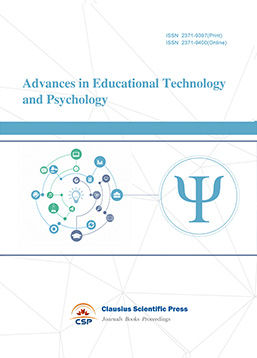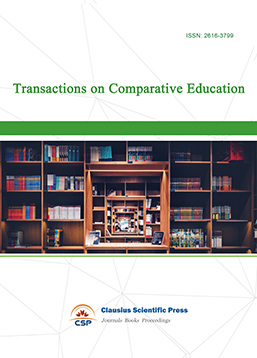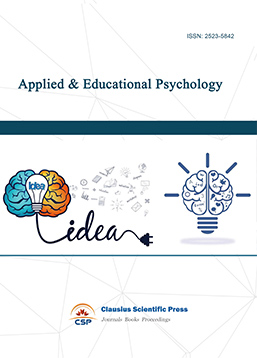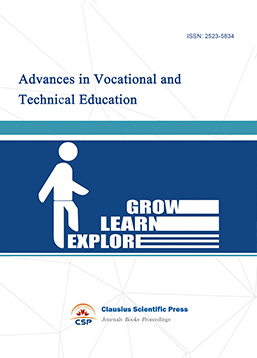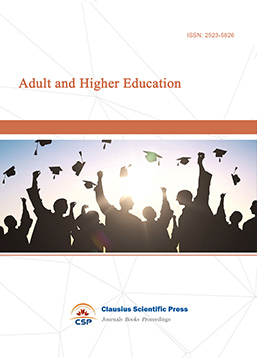Research on the Current Situation Analysis of Modern Sensing Technology Courses and Curriculum Design Exploration in Traditional Chinese Medicine Universities
DOI: 10.23977/curtm.2025.080104 | Downloads: 15 | Views: 682
Author(s)
Jing Zhao 1
Affiliation(s)
1 College of Pharmaceutical Engineering of Traditional Chinese Medicine, Tianjin University of Traditional Chinese Medicine, Tianjin, 301617, China
Corresponding Author
Jing ZhaoABSTRACT
It is of great significance for traditional Chinese medicine (TCM) universities to offer modern sensing technology (MST) related courses to train students' cross-disciplinary ability of TCM engineering. This paper makes a full investigation and analysis on the situation of TCM universities offering relevant courses. We put forward the central idea that it is necessary to combine the discipline characteristics of TCM universities with the practical application scenarios and cases of TCM to increase the practical links of the course, and enhance students' understanding of theoretical knowledge and application ability. Based on the principle of combining problem-oriented and case-driven teaching methods, the course should achieve the purpose of combining teaching with fun, consolidating the foundation, integrating practical applications, improving scientific research ability, and improving both students' professional skills and teaching satisfaction. Taking medical information engineering major as an example, the MST course is designed, and the course object, content and course requirements are elaborated in detail, so as to provide reference for TCM universities to carry out relevant courses.
KEYWORDS
Traditional Chinese Medicine Universities; Modern Sensing Technology; Curriculum Design; Problem-Oriented; Case-DrivenCITE THIS PAPER
Jing Zhao, Research on the Current Situation Analysis of Modern Sensing Technology Courses and Curriculum Design Exploration in Traditional Chinese Medicine Universities. Curriculum and Teaching Methodology (2025) Vol. 8: 17-24. DOI: http://dx.doi.org/10.23977/curtm.2025.080104.
REFERENCES
[1] Huang, L., Cheng, L., Cai, Q., Kosik, R. O., Huang, Y., Zhao, X., ... & Fan, A. P. C. (2014). Curriculum reform at Chinese medical schools: what have we learned? Medical teacher, 36(12), 1043-1050.
[2] Xue, C. C., Wu, Q., Zhou, W. Y., Yang, W. H., & Story, D. F. (2006). Comparison of Chinese medicine education and training in China and Australia. Annals-Academy of Medicine Singapore, 35(11), 775.
[3] Zhang, H., Jin, S. J., & Du, S. Z. (2020). Developing a curriculum model of English teaching for master's degree nursing education in a Chinese medicine university. International Journal of Nursing Sciences, 7(1), 99-104.
[4] Ma, X., Wang, Y., Pu, Y., Shang, H., Zhang, H., & Zhang, X. (2024). The integration of psychology and medicine: an empirical study of curriculum reform from the perspective of China. Frontiers in Psychology, 15, 1469067.
[5] Duan, Y. Y., Liu, P. R., Huo, T. T., Liu, S. X., Ye, S., & Ye, Z. W. (2021). Application and development of intelligent medicine in traditional Chinese medicine. Current medical science, 41(6), 1116-1122.
[6] Zhao, J., Ma, B., Liu, M, Liu, Z. Z., Li,G., Li, Z., & Wang, Y. M. (2022). Study on Screening of Hypertension Complicated With Coronary Heart Disease Based on Tongue Hyperspectral Imaging. SPECTROSCOPY AND SPECTRAL ANALYSIS, 42(2), 512-516.
[7] Liu, S., Wang, Z., Su, Y., Qi, L., Yang, W., Fu, M., ... & Ma, Q. (2021). A neuroanatomical basis for electroacupuncture to drive the vagal–adrenal axis. Nature, 598(7882), 641-645.
[8] Cui, P., Wang, Q., Li, Z., Wu, C., Li, G., Zhao, J., & Liu, M. (2022). A feasibility study on improving the non-invasive detection accuracy of bottled Shuanghuanglian oral liquid using near infrared spectroscopy. Spectrochimica Acta Part A: Molecular and Biomolecular Spectroscopy, 274, 121120.
| Downloads: | 38048 |
|---|---|
| Visits: | 1636434 |

 Download as PDF
Download as PDF